https://www.youtube.com/watch?v=rutcoSAy2ow
4 Levels of Omelets - Amateur to Food Scientist _ Epicurious
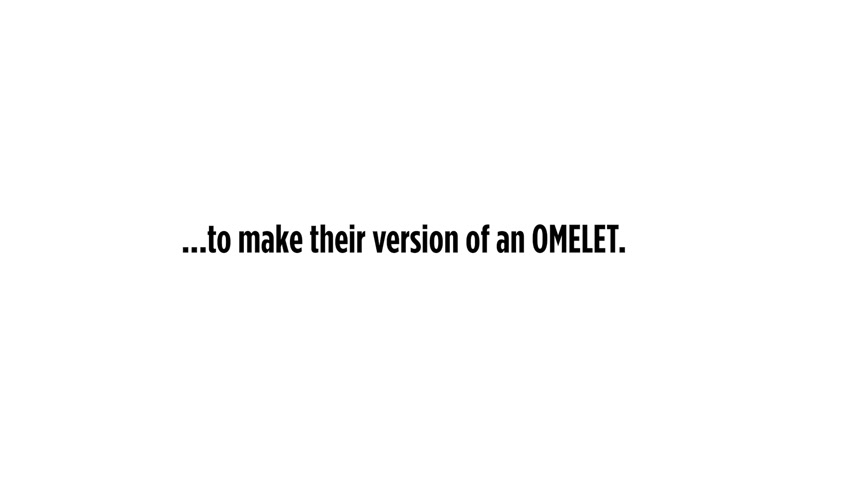
Hi , I'm Emily and I'm a level one chef .
Hi , I'm Lorenzo and I'm a level two chef .
Hi , I'm Barb and I'm a level three chef .
It's been a while since I made an omelet because usually I just give in and make scrambled eggs with stuff in them .
The recipe comes from many , many brunches that I've gone to .
I'm going to be making a French omelet with a wild mushroom and goat cheese filling and fresh herbs .
The fillings going into my omelet are precooked hams stick and some green bell pepper .
When I'm figuring out the amount of filling I should use .
I just kind of eyeball it and that's kind of gonna be it .
So that's the first thing I'm gonna do is actually gonna start cooking the bacon .
The vegetables I'm using today are red bell pepper , Spanish onion , green scallions , white button mushrooms and softened goat cheese with the mushrooms .
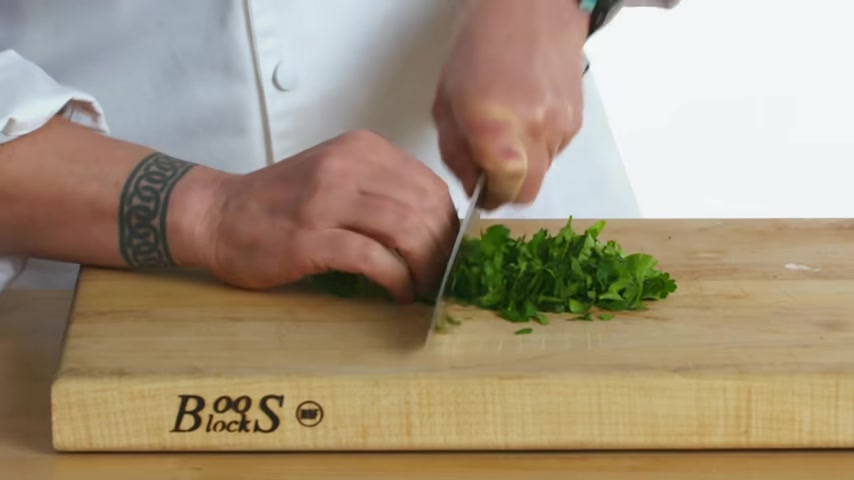
We're going to toss them with olive oil , salt and pepper .
All right .
So these are going to be roasted .
I might as well do my decor , I'm only gonna use a green portion .
We're gonna use Italian parsley chives and Cher and there's our fresh herb mix .
Let's start saut my vegetables .
I'm gonna add a little bit of red pepper flakes cause I like it a little spicy .
I'm not cooking this all the way down .
I just wanted a little bit of the raw bite off .
The mushrooms have come out of the oven .
We're going to roughly chop them .
We're going to add our mushrooms in just a little bit of black pepper .
So as this is going , I'll add a little bit of salt .
All right .
So we have sauteed the vegetables .
So I'm putting the filling into a piping bag so that it's gonna be easy to fill our omelet .
All right , we're going to now make the egg mixture .
So what I'm gonna do is I'm gonna crack some eggs into this bowl , two eggs and then I'm just gonna mix some other stuff into it .
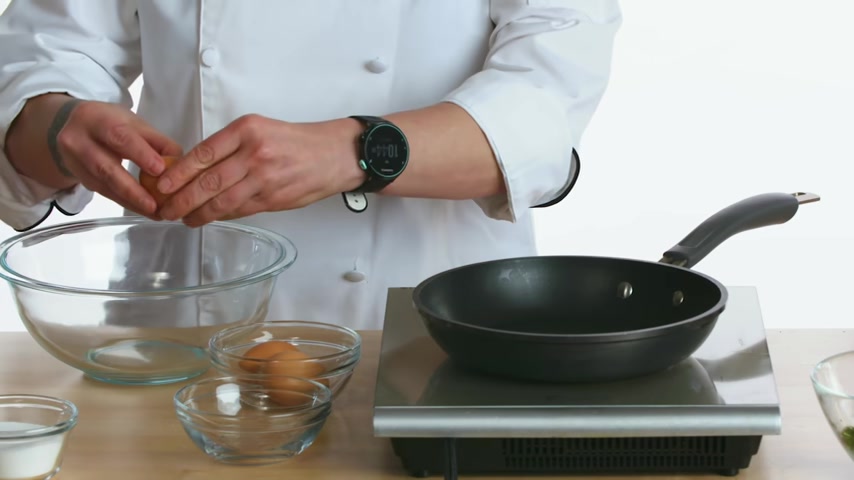
So , first I've got egg number one , egg , number two , didn't get any shell in there this time .
So , pretty much professional .
I actually crack the eggs in a separate bowl just to make sure I don't have any shells at the bottom of the bowl from here .
I slowly pour it into my actual whiskey bowl .
We're gonna start with three eggs for the omelet .
Crack the eggs away from the bowl that we're going to be mixing them in so that we don't chip the shell and get it into our egg mixture .
And I always use two ha hands to separate the eggs .
I'm gonna be whisking these eggs , but it needs salt .
The salt actually helps break down proteins in the eggs .
So you're gonna have a fluffier omelet .
What I'm gonna do next is mix in a little bit of water .
So , what I'm doing here is I'm just , uh , whisking it with a fork .
I use a fork .
But of course , if you have a handy dandy whisk go for it .
So I tend to whisk up and over in a circular motion so that I catch of the eggs whisking side to side doesn't really do anything for you .
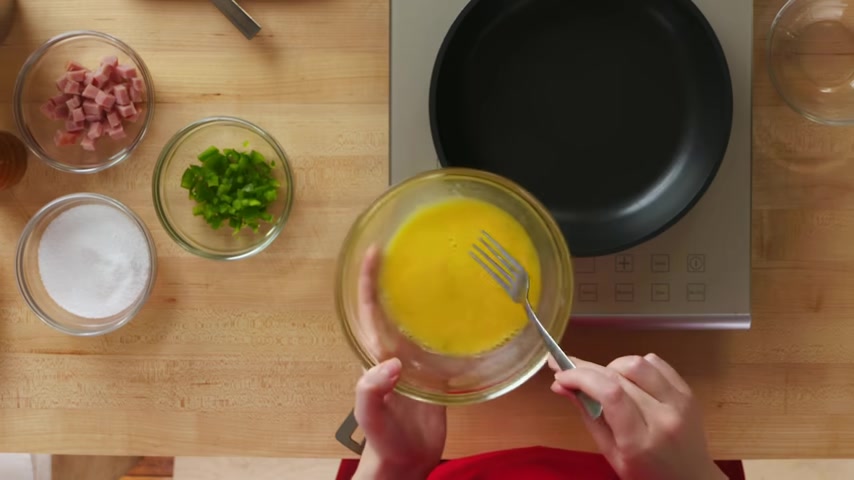
We wanna whisk vigorously because we wanna make sure that the whites and the yolks are completely homogenized .
So we don't end up with big white squatch in our omelet .
I like a little texture in there , you know , like some bits more yolk , some more egg white .
I just want to get some air into the egg mixture and kind of incorporate all the salt that I put in there .
So seasoning wise , I pretty much just eyeball it .
Yeah , that's a fine amount of pepper .
So I'm just gonna put , uh , just a pinch of salt in .
We're gonna add in a generous pinch of our fresh herbs and just mix them in just before we start to cook right now .
I'm actually going to start heating up my pan .
I'm gonna put this over medium heat .
We're gonna use two teaspoons of whole butter .
This is gonna add some flavor to our omelet and help the omelet not stick .
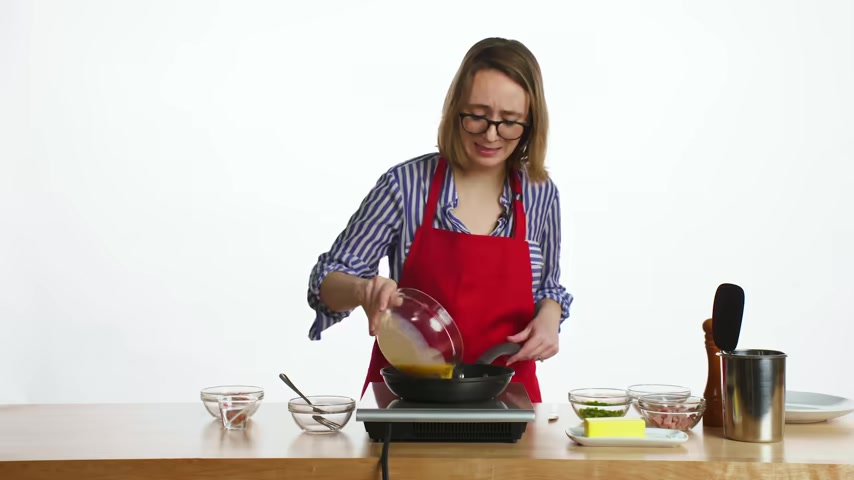
It's a pretty fast process and swim .
Don't burn .
As soon as the eggs go in the pan , we start to stir and I'm making little circles around into a big circle .
I move it around a little bit .
You can see as I'm doing that , it's starting to wrinkle a little bit .
That means it's cooking .
And the reason I'm doing this is because I want the eggs to cook evenly .
If I let them sit , the eggs that are touching the bottom of the pan are gonna cook more than the ones on top .
Even though this is thin , I just gonna give it like one more second .
Obviously , this is an exact science .
I personally like it loose like that .
It's still a little runny .
So I'm gonna cook the eggs till they're about 85% done .
I'm gonna cut off my heat and then I'm gonna spread this back out .
I'm gonna toss some fillings in here now .
So I'm just gonna put my ham and my peppers on one side of it .
Let's start with my cheese .
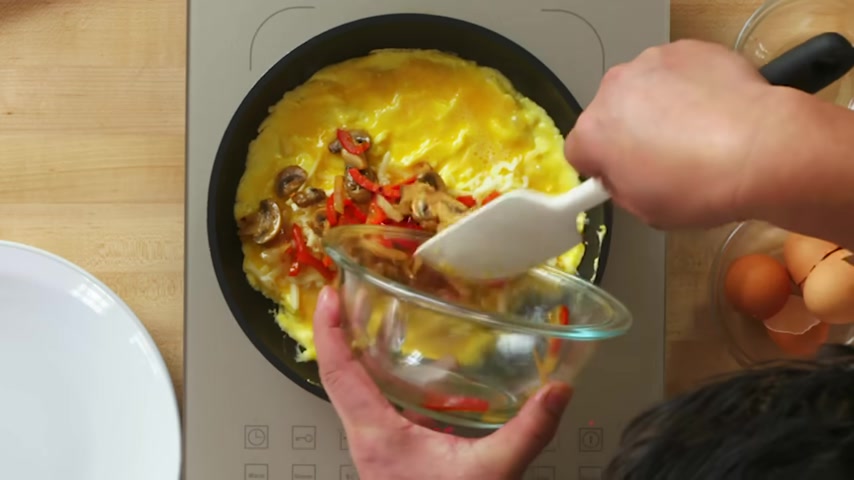
This is freshly grated cheddar cheese and I put it right back in the middle and then , and you take your veggies , you do the same thing in the middle .
Oh , my goodness .
That looks good already .
Then what I'm gonna do is take my filling and add a nice generous amount in the center .
And then I'm just going to take this side right and then just put a quick , but I'm gonna fold the omelet one third of the way , slide it towards the end of my pan .
Now I'm just gonna roll it onto a plate , lift up and roll and then roll kind of a plop .
Uh So I like to put hot sauce on my omelet .
I still have a little topping to go with my fresh scallions cause I love the bite of that oniony flavor of a scallion .
And then don't forget the bacon folks .
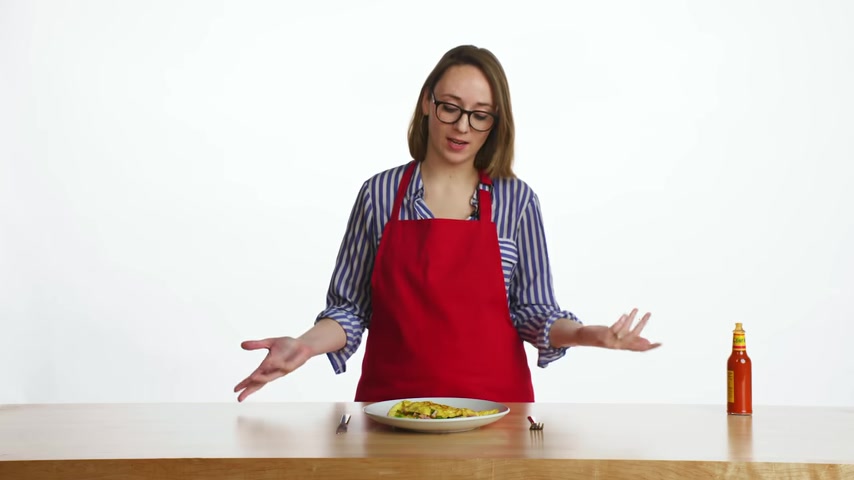
I like tearing and placing the bacon on top and then we're gonna take a nice generous pinch and just garnish our omelets at the end .
Alright .
So this is our omelet and I think it looks pretty good .
It looks actually really delicious .
So I'm really happy with how this turned out .
I can't wait till they get still really nice and moist .
Mm That's a good omelet .
The vegetables with the sharp sharp cheddar cheese .
It's so good together .
I get a little bit of tanginess from the goat cheese .
A really nice roasty flavor .
It's great .
I told you I could make an omelet .
We saw three different chefs make three different omelets , each with their own filling cooking method and toppings .
Let's start with the filling .
Emily used raw bell peppers in her omelet .
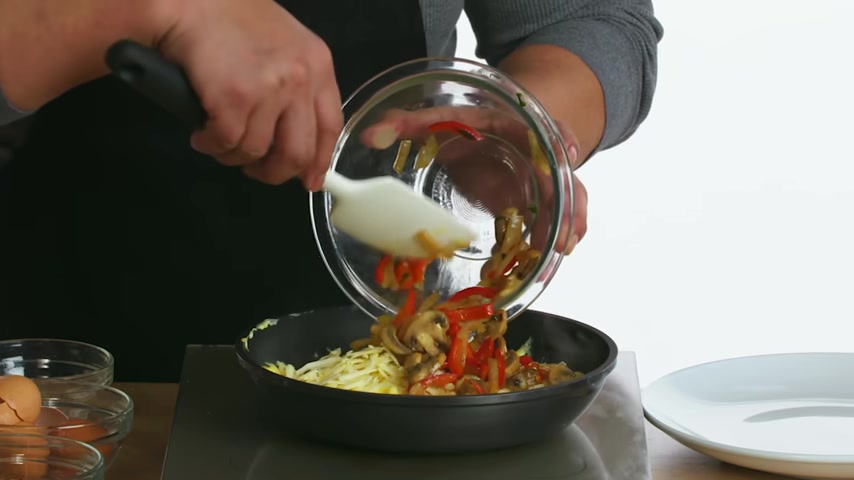
Lorenzo sauted his vegetables and barb used roasted mushrooms what Barb and Lorenzo did was remove some of that moisture from the vegetables so that the filling isn't too moist .
When we have a really moist filling in our omelet , we can see a process called SSIs or weeping when the eggs weep liquid out and create something a little bit more soggy as opposed to light and fluffy .
Lorenzo and Barb both filled their omelets with cheese .
Lorenzo chose cheddar cheese , which is a low moisture cheese .
I just like the sharpness of cheddar cheese and Barb chose goat cheese which is a high moisture cheese .
The goat cheese helps bind our mushrooms together .
High moisture cheeses is like goat cheese melt at the same temperature .
Our eggs will coagulate at whereas our low moisture cheeses like our cheddar cheese melt at a higher temperature than we need to cook our eggs .
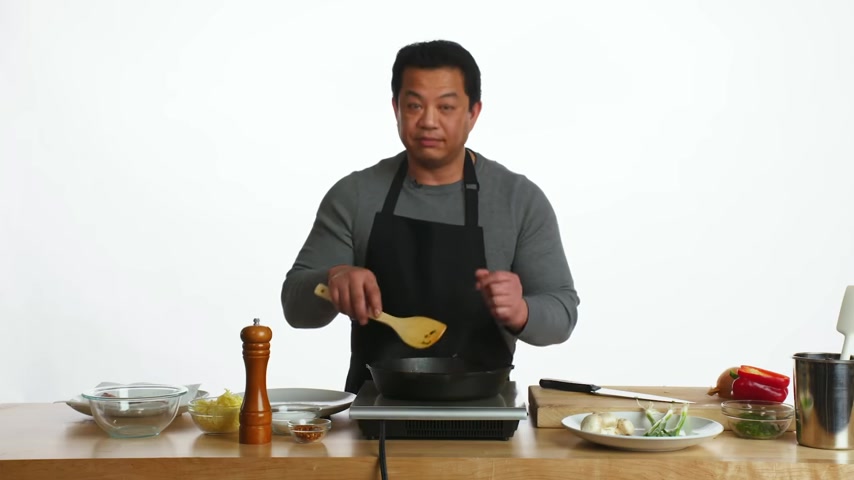
So they might not completely be melted when we go to roll or fold our omelet .
Next , our chefs blended their eggs .
Eggs are composed of two different parts , our egg white , which is mostly protein and water and that cooks at a lower temperature around 100 and 40 F in our egg yolk , which is mostly lipids with a little bit of protein and carbohydrates .
And that starts to cook at a higher temperature around 100 and 49 F blend .
Those two homogeneously will ensure that we have an even cook in our omelet .
Emily and Lorenzo used a fork to blend their eggs and barb used a whisk .
Either of these are good options to create a homogenous mixture .
But when using a whisk , be sure not to over aerate your eggs , we can over beat the eggs and produce a foamy mixture that won't cook at the same rate as the rest of our eggs .
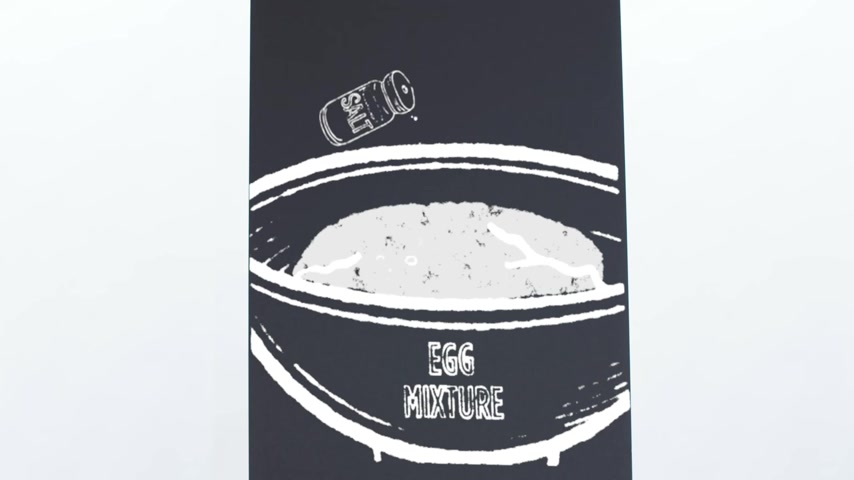
All of our chefs added salt to their egg mixture .
Before transferring that to the heat , the salt will help to dissolve all of the proteins in the egg mixture , which will create a fluffy final product .
Emily added water into her egg mixture .
That's what I was taught to do .
So that's how some people think that you have have to add liquid into your egg mixture .
But this isn't necessary .
Adding a liquid like water is gonna increase the temperature that we have to cook or coagulate our eggs .
If you are choosing to add a liquid into your egg mixture , choose heavy cream or whole milk to add an extra rich flavor to your eggs .
Emily used a moderate heat when cooking her omelet .

Lorenzo cooked his omelet at a low temperature and Barb chose a higher temperature to cook her omelet when using a low or moderate temperature like Lorenzo and Emily did it's OK to spread your omelet throughout the whole pan to ensure even cooking within the omelet when choosing a higher temperature , move your eggs around just like Barb did so that we're not over exposing our eggs to heat .
And we have an even cooking without damaging or toughening the protein in our eggs .
Like I'm frosting a cake .
So it's nice .
And even when we heat eggs , we see two different protein reactions .
The first protein reaction is called protein denaturation .
When we uncoil or unravel the egg proteins , next , the proteins coagulate or aggregate into something we call a curd .
This is the main protein reaction .
We see when we're cooking an omelet .
Today , we saw our chefs make two styles of omelets .
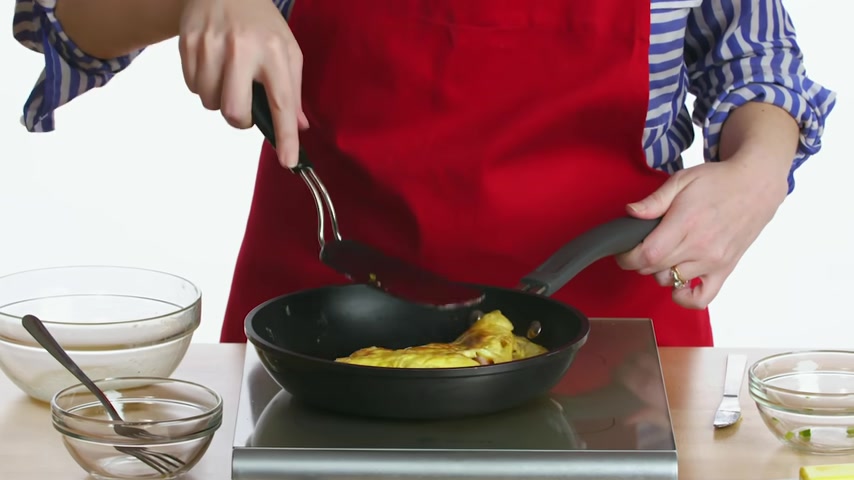
The French style omelet in the diner style omelet .
Emily made a diner style omelet where she brown the bottom of her omelet .
She created a light and fluffy texture and folded it in half .
Barb created a French style omelet with no browning on the bottom .
She left it a pale yellow color with a tender inside .
Lorenzo created something kind of in between the two .
It is though it really is .
He created a tender filling and brown the outside to create a crust and then fold it in half that the French style omelet leaves moisture on the top of the eggs giving them plasticity so that we can roll it into a cigar style shape .
The diner style omelet is cooked longer as evidenced by the browning on the bottom of Lorenzo and Emily's omelet , cooking our eggs longer draws out more moisture and we don't have the plasticity that we need to roll it into that cigar style shape .
That's why it's better to fold our diner style omelet .
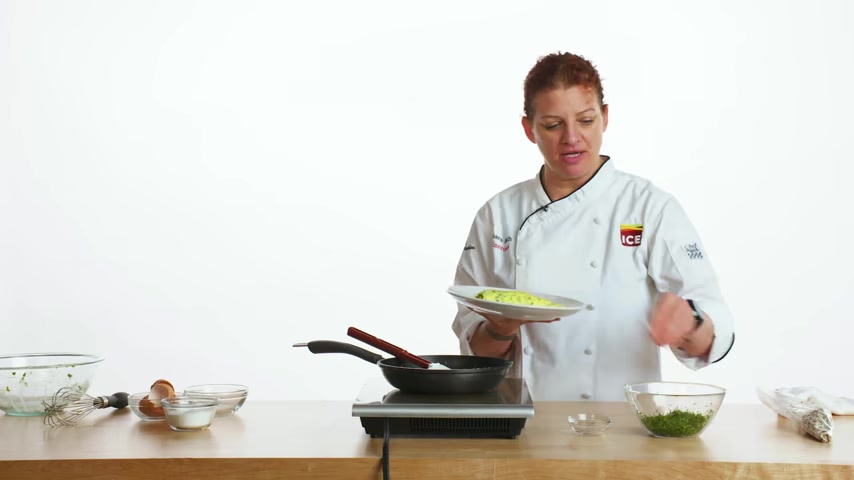
Everybody has their favorite way to top an omelet .
Emily chose hot sauce , which is gonna help to balance the salty flavor from the ham .
In her omelet , Lorenzo chose bacon , which is going to give a nice crunch and texture to his omelet while also providing a deep flavor .
She doesn't like bacon .
Barb added herbs to her omelet , which is going to give an earthiness and a freshness to her final product .
This is one of my favorite things to make for dinner .
Hopefully , you can incorporate some of these elements and techniques into your own recipe .
Are you looking for a way to reach a wider audience and get more views on your videos?
Our innovative video to text transcribing service can help you do just that.
We provide accurate transcriptions of your videos along with visual content that will help you attract new viewers and keep them engaged. Plus, our data analytics and ad campaign tools can help you monetize your content and maximize your revenue.
Let's partner up and take your video content to the next level!
Contact us today to learn more.